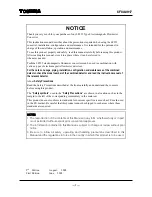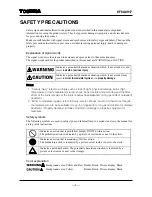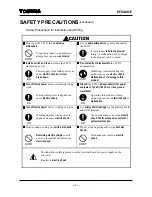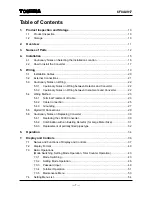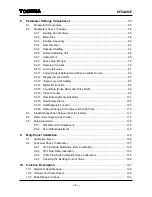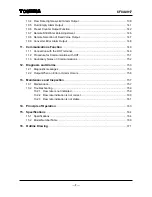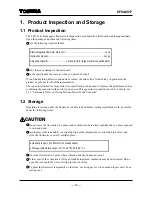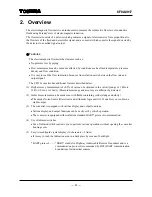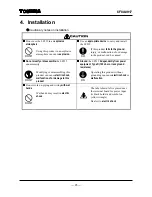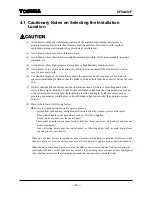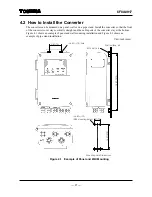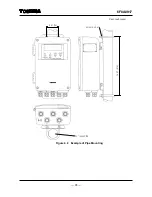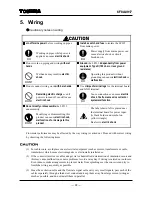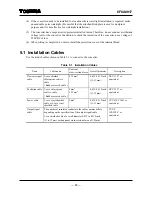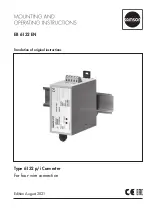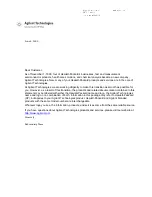
6F8A0917
- 5 -
Handling Precautions
To obtain the optimum performance from the LF232 converter for years of continuous operation,
observe the following precautions.
(1)
Do not store or install
the flowmeter in:
•
Places where there is direct sunlight
. If this is unavoidable, use an appropriate
sunshade
. If
the control keys (infrared switches) are exposed to direct sunlight,
they may not function
correctly
.
•
Places where there is snow and ice
Infrared switches may not function correctly.
•
Places where
excessive vibration or mechanical shock
occurs.
•
Places where
high temperature or high humidity
conditions obtain.
•
Places where
corrosive atmospheres
exit.
•
Places that can be submerged under water
.
•
Place where there is slop floor
. To put the flowmeter temporarily on the floor,
place it carefully
with something
,
such as stopper
,
to support it so that the flowmeter will not topple over
.
•
Places where there is following factors.
◆
Factors to impede infrared switch to operate properly
・
Intense light such as direct sunlight and reflected sunlight by window glass or metal plate
・
Place where brightness changes suddenly such as ON/OFF of lighting
・
Dense smoke or steam near the control panel
・
Those attached on the control panel such as rain (dew drop), snow, ice, mud and oil, and haze
due to their attachment
・
Light reflecting object near the control panel, or reflecting object such as metal plate placed
opposing to the control panel
When any of above factors is considered, take a measure for the proper operation of infrared
switch such as to place a cover or to secure a space for at least a person to stand in front of the
control panel.
When unable to avoid above factors, operate the EMF converter removing the factor by
covering the control panel by hand so that light does not shine on it, by cleaning those attached
on the control panel, or by standing in-between the reflecting object and the control panel to
block the light.
(2) Wire
cables
correctly and securely
.
Be sure to ground at the combined converter side (
class D grounding
(
grounding resistance
100
Ω
or less
)). Avoid a common ground
used with other equipment
where earth current may
flow. An
independent ground
is preferable.
(3) The cable lead-in section must be tightened securely to keep air tightness.
(4) Keep the fluid to be measured from freezing.(This may damage the detector tube.)
(5) To prevent liquid leaks caused by corrosion, select materials appropriate for applicable fluids.


